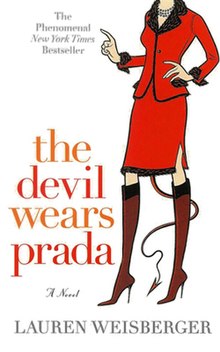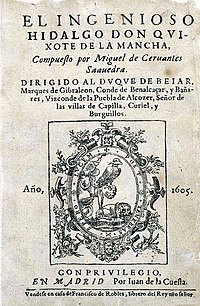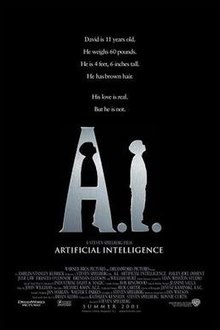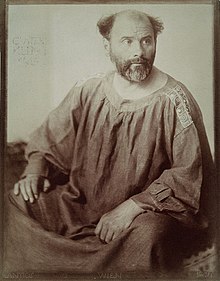Week 14 Willa Cather’s "Paul's Case: A Study in Temperament"
1."Paul's Case: A Study in Temperament"
"Paul's Case: A Study in Temperament" is a short story by Willa Cather. It was first published in McClure's Magazine in 1905. It also appeared in a collection of Cather's stories, The Troll Garden (1905). For many years, "Paul's Case" was the only one of her stories that Cather allowed to be anthologized
Around the turn of the century Pittsburgh was an industrial center with a successful class of business leaders. According to Cather's story these leaders could manage their companies while traveling in Europe. New York City, on the other hand, was a place one escaped to; a center of fine living and society, and “the symbol of ultimate glamour and cosmopolitan sophistication at that time.”
The symbolism of this lifestyle in "Paul's Case" is the luxurious Waldorf Astoria Hotel. The cities offer contrasting models of the humdrum life of routine and lived in high style.
Paul, a Pittsburgh high school student, is frustrated with his middle-class life. He dreams of another life in which he would attend concerts and theater, although his appreciation of the arts is more social and superficial than aesthetic. For example, he enjoys a symphony concert not so much for the music but for the atmosphere: "the lights danced before his eyes and the concert hall blazed into unimaginable splendor." Later on, he steals money to support a short escapade in New York City, but once he exhausts his funds, he commits suicide rather than allow his father to take him back to Pittsburgh.
Paul's teachers and father refer to Paul's "case," representing him at a distance and as an example of someone to be studied, handled, and managed. The term enables Cather to adopt "the voice of medical authority."

Willa Sibert Cather ( December 7, 1873 – April 24, 1947) was an American writer who achieved recognition for her novels of frontier life on the Great Plains, including O Pioneers! (1913), The Song of the Lark (1915), and My Ántonia (1918). In 1923 she was awarded the Pulitzer Prize for One of Ours (1922), a novel set during World War I.
Cather grew up in Virginia and Nebraska, and graduated from the University of Nebraska–Lincoln. She lived and worked in Pittsburgh for ten years, supporting herself as a magazine editor and high school English teacher. At the age of 33 she moved to New York City, her primary home for the rest of her life, though she also traveled widely and spent considerable time at her summer residence on Grand Manan Island, New Brunswick.
2."Old King Cole"
Identity of King Cole
It is unlikely that the King Cole of the nursery rhyme can be identified with any particular historical person.
William King mentions two possibilities: the "Prince that Built Colchester" and a 12th-century cloth merchant from Reading named Cole-brook. Sir Walter Scott thought that "Auld King Coul" was the father of the giant Fyn M'Coule (Finn McCool).
Coel Hen theory
It is often noted that the name of the legendary Welsh king Coel Hen can be translated 'Old Cole' or 'Old King Cole'.This sometimes leads to speculation that he, or some other Coel in Roman Britain, is the model for Old King Cole of the nursery rhyme. However, there is no documentation of a connection between the fourth-century figures and the eighteenth-century nursery rhyme.
Further speculation connects Old King Cole and thus Coel Hen to Colchester, but in fact Colchester was not named for Coel Hen.Connecting with the musical theme of the nursery rhyme, according to a much later source, Coel Hen supposedly had a daughter who was skilled in music, according to the highly unreliable Geoffrey of Monmouth, writing in the 12th century.
Cole-brook theory
In the 19th century William Chappell, an expert on popular music, suggested the possibility that the "Old King Cole" of nursery rhyme fame was really "Old Cole", alias Thomas Cole-brook, a supposed 12th-century Reading cloth merchant whose story was recounted by Thomas Deloney in his Pleasant History of Thomas of Reading (c. 1598), and who was well known as a character in plays of the early 17th century. The name "Old Cole" had some special meaning in Elizabethan theatre, but it is unclear what it was.
3.Charles Perrault

Charles Perrault ( 12 January 1628 – 16 May 1703) was a French author and member of the Académie Française. He laid the foundations for a new literary genre, the fairy tale, with his works derived from pre-existing folk tales. The best known of his tales include Le Petit Chaperon Rouge (Little Red Riding Hood), Cendrillon (Cinderella), Le Chat Botté (Puss in Boots), La Belle au bois Dormant (The Sleeping Beauty), and Barbe Bleue (Bluebeard). Some of Perrault's versions of old stories have influenced the German versions published by the Brothers Grimm more than 100 years later. The stories continue to be printed and have been adapted to opera, ballet (such as Tchaikovsky's The Sleeping Beauty), theatre, and film. Perrault was an influential figure in the 17th-century French literary scene, and was the leader of the Modern faction during the Quarrel of the Ancients and the Moderns.
The Brothers Grimm , Jacob (1785–1863) and Wilhelm Grimm (1786–1859), were German academics, philologists, cultural researchers, lexicographers and authors who together specialized in collecting and publishing folklore during the 19th century. They were among the best-known storytellers of folk tales, and popularized stories such as "Cinderella" ("Aschenputtel"), "The Frog Prince" ("Der Froschkönig"), "Hansel and Gretel" ("Hänsel und Gretel"), "Rapunzel", "Rumpelstiltskin" ("Rumpelstilzchen"),"Sleeping Beauty" ("Dornröschen"), and "Snow White" ("Schneewittchen"). Their first collection of folk tales, Children's and Household Tales (Kinder- und Hausmärchen), was published in 1812.
The popularity of the Grimms' best folk tales has endured well. The tales are available in more than 100 languages and have been later adapted by filmmakers including Lotte Reiniger and Walt Disney, with films such as Snow White and the Seven Dwarfs and Sleeping Beauty. During the 1930s and 40s, the tales were used as propaganda by the Third Reich; later in the 20th century psychologists such as Bruno Bettelheim reaffirmed the value of the work, in spite of the cruelty and violence in original versions of some of the tales, which the Grimms eventually sanitized.
4.The Devil Wears Prada

The Devil Wears Prada (2003) is a best-selling novel by Lauren Weisberger about a young woman who is hired as a personal assistant to a powerful fashion magazine editor, a job that becomes nightmarish as she struggles to keep up with her boss's grueling schedule and demeaning demands. It spent six months on the New York Times bestseller list and became the basis for the 2006 film of the same name, starring Meryl Streep, Anne Hathaway, and Emily Blunt. The novel is considered by many to be an example of the "chick lit" genre.
Commercial and critical reception
Kate Betts, a former editor of Harper's Bazaar who also worked for Wintour at one point in her career, spared no barb in the Times Book Review, stressing the main character's ingratitude at the unique opportunity of working at Vogue: "If Andrea doesn't ever realize why she should care about Miranda Priestly, why should we care about Andrea, or prize the text for anything more than the cheap frisson of the context?"Janet Maslin, in the daily paper, joined in: "a mean-spirited Gotcha! of a book, one that offers little indication that the author could interestingly sustain a gossip-free narrative ..."
Film
A movie of the same name, based on the novel, was released by 20th Century Fox in June 2006, starring Meryl Streep and Anne Hathaway. The film grossed $27.5 million in its opening weekend, amassing total U.S. sales of $125 million and total worldwide sales of $322 million, making it one of the top-grossing films of summer 2006. The film departs from the book in several ways. For example, Andrea is a graduate of Northwestern University in the film, not Brown. The film shows Miranda requesting Andrea go to Paris with her because Emily is unwell. The book, in further detail, has Emily catching mono, thus not being able to go with Miranda. Further, Lily, Andrea's best friend, is the main reason Andrea leaves Paris in the book. Lily is an alcoholic and gets into a car crash. Andrea has to decide whether to stay with Miranda or go to her friend. The movie does not include any of these details and ends with Andy and Miranda viewing one another with mutual respect. The book affords Andrea no such gratitude as she curses Miranda to her face and is consequently fired.
5.Don Quixote

Don Quixote is a Spanish novel by Miguel de Cervantes Saavedra. Published in two volumes, in 1605 and 1615, Don Quixote is considered the most influential work of literature from the Spanish Golden Age and the entire Spanish literary canon. As a founding work of modern Western literature and one of the earliest canonical novels, it regularly appears high on lists of the greatest works of fiction ever published, such as the Bokklubben World Library collection that cites Don Quixote as authors' choice for the "best literary work ever written".
The story follows the adventures of a hidalgo named Mr. Alonso Quixano who reads so many chivalric romances that he loses his sanity and decides to set out to revive chivalry, undo wrongs, and bring justice to the world, under the name Don Quixote de la Mancha. He recruits a simple farmer, Sancho Panza, as his squire, who often employs a unique, earthy wit in dealing with Don Quixote's rhetorical orations on antiquated knighthood. Don Quixote, in the first part of the book, does not see the world for what it is and prefers to imagine that he is living out a knightly story. Throughout the novel, Cervantes uses such literary techniques as realism, metatheatre, and intertextuality.
Miguel de Cervantes Saavedra (29 September 1547 – 22 April 1616), was a Spanish writer who is widely regarded as the greatest writer in the Spanish language and one of the world's pre-eminent novelists.
His major work, Don Quixote, considered to be the first modern novel, is a classic of Western literature and is regarded among the best works of fiction ever written. His influence on the Spanish language has been so great that the language is often called la lengua de Cervantes ("the language of Cervantes").He has also been dubbed El príncipe de los ingenios ("The Prince of Wits").
 In 1569, in forced exile from Castile, Cervantes moved to Rome, where he worked as chamber assistant of a cardinal. He then enlisted as a soldier in a Spanish Navy infantry regiment and continued his military life until 1575, when he was captured by Barbary pirates. After five years of captivity, he was released by his captors on payment of a ransom by his parents and the Trinitarians, a Catholic religious order, and he subsequently returned to his family in Madrid.
In 1569, in forced exile from Castile, Cervantes moved to Rome, where he worked as chamber assistant of a cardinal. He then enlisted as a soldier in a Spanish Navy infantry regiment and continued his military life until 1575, when he was captured by Barbary pirates. After five years of captivity, he was released by his captors on payment of a ransom by his parents and the Trinitarians, a Catholic religious order, and he subsequently returned to his family in Madrid.In 1585, Cervantes published a pastoral novel named La Galatea. He worked as a purchasing agent for the Spanish Armada, and later as a tax collector for the government. In 1597, discrepancies in his accounts for three years previous landed him in the Crown Jail of Seville.
In 1605, Cervantes was in Valladolid when the immediate success of the first part of his Don Quixote, published in Madrid, signaled his return to the literary world. In 1607, he settled in Madrid, where he lived and worked until his death. During the last nine years of his life, Cervantes solidified his reputation as a writer; he published the Novelas ejemplares (Exemplary Novels) in 1613, the Viaje al Parnaso (Journey to Parnassus) in 1614, and the Ocho comedias y ocho entremeses and the second part of Don Quixote in 1615. His last work, Los trabajos de Persiles y Sigismunda (The Works of Persiles and Sigismunda), was published posthumously in 1617.
6.The Lord of the Rings
The Lord of the Rings is an epic high-fantasy novel written by English author J. R. R. Tolkien. The story began as a sequel to Tolkien's 1937 fantasy novel The Hobbit, but eventually developed into a much larger work. Written in stages between 1937 and 1949, The Lord of the Rings is one of the best-selling novels ever written, with over 150 million copies sold.
The title of the novel refers to the story's main antagonist, the Dark Lord Sauron,who had in an earlier age created the One Ring to rule the other Rings of Power as the ultimate weapon in his campaign to conquer and rule all of Middle-earth. From quiet beginnings in the Shire, a hobbit land not unlike the English countryside, the story ranges across Middle-earth, following the course of the War of the Ring through the eyes of its characters, not only the hobbits Frodo Baggins, Samwise "Sam" Gamgee, Meriadoc "Merry" Brandybuck and Peregrin "Pippin" Took, but also the hobbits' chief allies and travelling companions: the Men Aragorn son of Arathorn, a Ranger of the North, and Boromir, a Captain of Gondor; Gimli son of Glóin, a Dwarf warrior; Legolas Greenleaf, an Elven prince; and Gandalf, a Wizard.
The work was initially intended by Tolkien to be one volume of a two-volume set, the other to be The Silmarillion, but this idea was dismissed by his publisher. For economic reasons, The Lord of the Rings was published in three volumes over the course of a year from 29 July 1954 to 20 October 1955.The three volumes were titled The Fellowship of the Ring, The Two Towers and The Return of the King. Structurally, the novel is divided internally into six books, two per volume, with several appendices of background material included at the end. Some editions combine the entire work into a single volume. The Lord of the Rings has since been reprinted numerous times and translated into 38 languages.
Tolkien's work has been the subject of extensive analysis of its themes and origins. Although a major work in itself, the story was only the last movement of a larger epic Tolkien had worked on since 1917, in a process he described as mythopoeia. Influences on this earlier work, and on the story of The Lord of the Rings, include philology, mythology, religion and the author's distaste for the effects of industrialization, as well as earlier fantasy works and Tolkien's experiences in World War I. These inspirations and themes have often been denied by Tolkien himself. The Lord of the Rings in its turn is considered to have had a great effect on modern fantasy; the impact of Tolkien's works is such that the use of the words "Tolkienian" and "Tolkienesque" have been recorded in the Oxford English Dictionary.
The enduring popularity of The Lord of the Rings has led to numerous references in popular culture, the founding of many societies by fans of Tolkien's works, and the publication of many books about Tolkien and his works. The Lord of the Rings has inspired, and continues to inspire, artwork, music, films and television, video games, and subsequent literature. Award-winning adaptations of The Lord of the Rings have been made for radio, theatre, and film. In 2003, it was named Britain's best-loved novel of all time in the BBC's The Big Read.
 John Ronald Reuel Tolkien, ( 3 January 1892 – 2 September 1973) was an English writer, poet, philologist, and university professor who is best known as the author of the classic high-fantasy works The Hobbit, The Lord of the Rings, and The Silmarillion.
John Ronald Reuel Tolkien, ( 3 January 1892 – 2 September 1973) was an English writer, poet, philologist, and university professor who is best known as the author of the classic high-fantasy works The Hobbit, The Lord of the Rings, and The Silmarillion.He served as the Rawlinson and Bosworth Professor of Anglo-Saxon and Fellow of Pembroke College, Oxford, from 1925 to 1945 and Merton Professor of English Language and Literature and Fellow of Merton College, Oxford from 1945 to 1959. He was at one time a close friend of C. S. Lewis—they were both members of the informal literary discussion group known as the Inklings. Tolkien was appointed a Commander of the Order of the British Empire by Queen Elizabeth II on 28 March 1972.
After Tolkien's death, his son Christopher published a series of works based on his father's extensive notes and unpublished manuscripts, including The Silmarillion. These, together with The Hobbit and The Lord of the Rings, form a connected body of tales, poems, fictional histories, invented languages, and literary essays about a fantasy world called Arda and Middle-earth[b] within it. Between 1951 and 1955, Tolkien applied the term legendarium to the larger part of these writings.
While many other authors had published works of fantasy before Tolkien, the great success of The Hobbit and The Lord of the Rings led directly to a popular resurgence of the genre. This has caused Tolkien to be popularly identified as the "father" of modern fantasy literature—or, more precisely, of high fantasy. In 2008, The Times ranked him sixth on a list of "The 50 greatest British writers since 1945". Forbes ranked him the 5th top-earning "dead celebrity" in 2009
7.A.I. Artificial Intelligence

A.I. Artificial Intelligence, also known as A.I., is a 2001 American science fiction drama film directed by Steven Spielberg. The screenplay by Spielberg was based on a screen story by Ian Watson and the 1969 short story "Super-Toys Last All Summer Long" by Brian Aldiss. The film was produced by Kathleen Kennedy, Spielberg and Bonnie Curtis. It stars Haley Joel Osment, Jude Law, Frances O'Connor, Brendan Gleeson and William Hurt. Set in a futuristic post-climate change society, A.I. tells the story of David (Osment), a childlike android uniquely programmed with the ability to love.
Development of A.I. originally began with producer-director Stanley Kubrick, after he acquired the rights to Aldiss' story in the early 1970s. Kubrick hired a series of writers until the mid-1990s, including Brian Aldiss, Bob Shaw, Ian Watson, and Sara Maitland. The film languished in protracted development for years, partly because Kubrick felt computer-generated imagery was not advanced enough to create the David character, whom he believed no child actor would convincingly portray. In 1995, Kubrick handed A.I. to Spielberg, but the film did not gain momentum until Kubrick's death in 1999. Spielberg remained close to Watson's film treatment for the screenplay.
The film divided critics, with the overall balance being positive, and grossed approximately $235 million. The film was nominated for two Academy Awards at the 74th Academy Awards, for Best Visual Effects and Best Original Score (by John Williams). A.I. is dedicated to Stanley Kubrick.
8. Gustav Klimt

Gustav Klimt (July 14, 1862 – February 6, 1918) was an Austrian symbolist painter and one of the most prominent members of the Vienna Secession movement. Klimt is noted for his paintings, murals, sketches, and other objets d'art. Klimt's primary subject was the female body,and his works are marked by a frank eroticism. In addition to his figurative works, which include allegories and portraits, he painted landscapes. Among the artists of the Vienna Secession, Klimt was the most influenced by Japanese art and its methods.
Early in his artistic career, he was a successful painter of architectural decorations in a conventional manner. As he developed a more personal style, his work was the subject of controversy that culminated when the paintings he completed around 1900 for the ceiling of the Great Hall of the University of Vienna were criticized as pornographic. He subsequently accepted no more public commissions, but achieved a new success with the paintings of his "golden phase", many of which include gold leaf. Klimt's work was an important influence on his younger contemporary Egon Schiele.

Danaë, 1907. Private Collection, Vienna
9. Omaha,Nebraska
Omaha is the largest city in the state of Nebraska and the county seat of Douglas County. Omaha is located in the Midwestern United States on the Missouri River, about 10 miles (15 km) north of the mouth of the Platte River. Omaha is the anchor of the Omaha-Council Bluffs metropolitan area, which includes Council Bluffs, Iowa, across the Missouri River from Omaha. According to the 2010 census, Omaha's population was 408,958, making it the nation's 43rd-largest city. According to the 2014 Population Estimates, Omaha's population was 446,599. Including its suburbs, Omaha formed the 60th-largest metropolitan area in the United States in 2013, with an estimated population of 895,151 residing in eight counties. The Omaha-Council Bluffs-Fremont, Nebraska-IA Combined Statistical Area is 931,667, according to the U.S. Census Bureau's 2013 estimate.There are nearly 1.3 million residents within the Greater Omaha area, comprising a 50-mile (80 km) radius of Downtown Omaha, the city's center.
Warren Edward Buffett (born August 30, 1930) is an American business magnate, investor, and philanthropist. He is considered by some to be one of the most successful investors in the world,and as of March 2017 is the second wealthiest person in the United States, and the fourth wealthiest in the world, with a total net worth of $73.3 billion.
Buffett is a notable philanthropist, having pledged to give away 99 percent[10] of his fortune to philanthropic causes, primarily via the Bill & Melinda Gates Foundation. In 2009, with Bill Gates and Mark Zuckerberg, Warren founded The Giving Pledge, whereby billionaires pledge to give away at least half of their fortunes.He is also active in contributing to political causes, having endorsed Democratic candidate Hillary Clinton in the 2016 U.S. presidential election; he has publicly opposed the policies, actions, and statements of the current U.S. president, Donald Trump.
Gerald Rudolph Ford, Jr.
 (born Leslie Lynch King, Jr.; July 14, 1913 – December 26, 2006)was an American politician who served as the 38th President of the United States from 1974 to 1977, following the resignation of Richard Nixon. Prior to this he served eight months as the 40th Vice President of the United States, following the resignation of Spiro Agnew. He was the first person appointed to the vice presidency under the terms of the 25th Amendment, and subsequently the only person to have served as both Vice President and President of the United States without being elected to executive office. Before his appointment to the vice presidency, Ford served 25 years as U.S. Representative from Michigan's 5th congressional district, the final nine of them as the House Minority Leader.
(born Leslie Lynch King, Jr.; July 14, 1913 – December 26, 2006)was an American politician who served as the 38th President of the United States from 1974 to 1977, following the resignation of Richard Nixon. Prior to this he served eight months as the 40th Vice President of the United States, following the resignation of Spiro Agnew. He was the first person appointed to the vice presidency under the terms of the 25th Amendment, and subsequently the only person to have served as both Vice President and President of the United States without being elected to executive office. Before his appointment to the vice presidency, Ford served 25 years as U.S. Representative from Michigan's 5th congressional district, the final nine of them as the House Minority Leader.5 kinds of context clues







0 個意見:
張貼留言
訂閱 張貼留言 [Atom]
<< 首頁